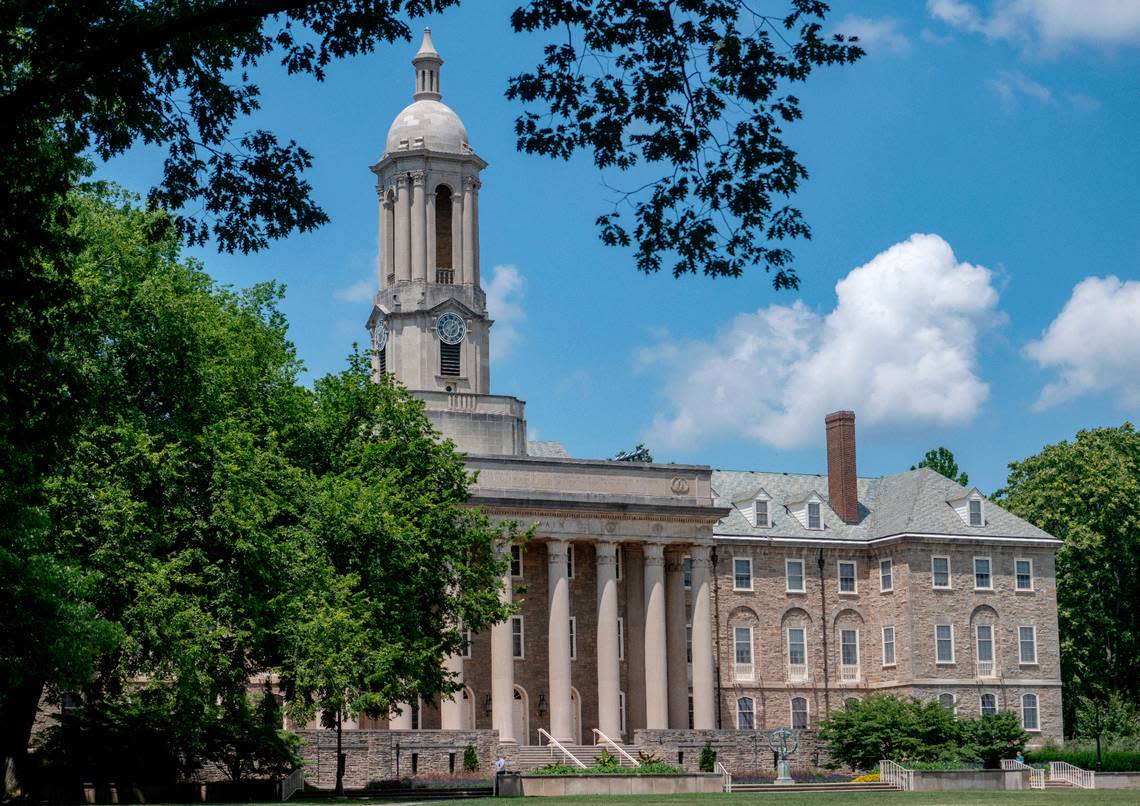Penn State proposes housing project near Lasch Football Building. Will all students benefit?

Penn State is looking into the construction of a 1,500-bed student housing project that would be located a short walk from the Lasch Football Building, raising the question of whether the proposed project would primarily cater to football players and other student-athletes.
According to a source with knowledge of the situation and to documents obtained by the CDT, the project would be a public-private partnership — similar to the current agreement with the Nittany Lion Inn — and it would be open, at least partially, in time for the 2026 fall semester. The new dorms would be located at Graduate Circle, between Hastings Road and East College Avenue, about 1,500 feet from the football building and farther east than East Halls.
At least two university trustees expressed concerns Friday about the proposal, saying little to no discussion was held on the project. A Request for Qualifications, which asks for submissions from qualified companies, was sent to more than 30 businesses in late February.
“We have far more questions than we have answers because we have no information,” said trustee Anthony Lubrano, who was recently chastised by trustees leaders in connection with his proposal to name the football field after Joe Paterno. “What a hell of a way to run an institution.”
Added fellow alumni-elected trustee Barry Fenchak: “We weren’t really told anything of any substance up until now.”
Technically, NCAA rules do not allow for athlete-only housing and generally require that student-athletes comprise less than 50% of a dorm. But some schools, such as Auburn, found a workaround by housing entire teams in luxury residence halls but making the building large enough so non-student-athletes still make up the majority.
Nittany Lions coach James Franklin told reporters in September 2022 that he once lost a recruiting battle over an eventual NFL player because Penn State didn’t have single-room dorms. He publicly pushed for better housing — “There is a way to do it within the rules and still get the same thing accomplished,” he said — and, a month later, athletic director Pat Kraft told The Athletic that improved player housing was an “important piece in the decision-making process for recruits.”
University spokesperson Wyatt DuBois, who confirmed many of the details of the project, pushed back Friday on the narrative the location was chosen simply to benefit student-athletes.
“While student-athletes may choose to live at the property, it will be available to all students after their first year at Penn State,” DuBois wrote in an email. “After looking at several sites on campus, Graduate Circle was selected as the proposed site because of the facility’s size.”
The proposal to build additional student housing isn’t altogether surprising. The university announced in January that, to increase revenue, it planned to gradually increase enrollment at University Park to eventually serve an additional 10,000 students. This fall’s freshman class is expected to increase from 9,175 to 9,500, for instance.
The university’s board of trustees will still need to formally approve any such construction and public-private partnership. Because the land also straddles the line between College Township and State College Borough, both municipalities and their respective planning commissions might also hear the plans.
In fact, the reason the proposed project became public Friday is because of the public nature of those municipalities. An administrator of an unofficial PSU parents’ Facebook group posted about a relevant memo buried amid a 306-page College Township agenda earlier this month. In a memorandum addressed to an engineering company working for Penn State, the township asked it to update a transportation study due to the “construction of a 1,500-bed student housing project at Graduate Circle.”
In the Facebook group, some bemoaned what they assumed was special treatment of student-athletes. And even the two trustees questioned the proposed location.
“The location, in some ways, seems curious and potentially inefficient,” Fenchak told the CDT. “The board hasn’t discussed any pros and cons of where to locate any potential new dormitory.”
Said Lubrano: “I’d like to know why we decided to do this by the Bryce Jordan Center. We have property over by the Greyhound (on North Atherton Street) that’s much closer to campus. It makes more sense if we attempt to develop that land because we could get money from the state and federal government.”
It wasn’t immediately known how soon Penn State’s board of trustees might publicly discuss or vote on the matter. DuBois said no date has yet been set since it remains early in the process.
Penn State’s trustees next meet May 2-3 at University Park.

